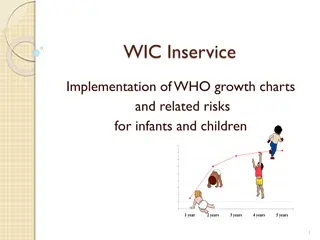Economic Growth - Chapter 10 Section 1
Explore the impact of the Industrial Revolution in New England, including the growth of industries, new technologies, patents, factories, and the expansion of agriculture. Discover the rise of economic independence, the free enterprise system, and the transformation of cities.
- Industrial Revolution
- economic growth
- technological advancements
- New England
- factories
- agriculture
- patents
- free enterprise
- cities
Download Presentation

Please find below an Image/Link to download the presentation.
The content on the website is provided AS IS for your information and personal use only. It may not be sold, licensed, or shared on other websites without obtaining consent from the author. Download presentation by click this link. If you encounter any issues during the download, it is possible that the publisher has removed the file from their server.
E N D
Presentation Transcript
Economic Growth Chapter 10 Section 1
Growth of the Industry O People in the mid-1700s used to work in their homes and workshops to make cloth and other goods. They would use hand tools to make furniture, farm equipment, household items, and clothes. O All this was about to change, and it started in Great Britain. O Inventors created machinery to perform some of the work involved in cloth making O These machines were run on water and they decided to build these mills next to the rivers. O Many people left their homes and went to work in these mills and receive wages from that. O This was called the Industrial Revolution
Industrial Revolution in New England O The Industrial Revolution took root in the United States around 1800 and mainly in the New England area. O The geography contributed to this because farming was difficult because of the poor soil and people were willing to give it up and find work. O There were plenty of lakes and rivers to run the factory, and they were close to other resources like coal and iron deposits from Pennsylvania.
New Technology O The invention of new machines and technology led to the Industrial Revolution. O The spinning jenny, which spun thread, and the power loom, which wove the thread into cloth allowed many steps in making cloth to be done by machine. O This saved a lot of time and money. O In 1793, Eli Whitney created the cotton gin. This machine helped quickly and efficiently remove seeds from the cotton fiber. O He also went on to make interchangeable parts which helped for the production of different kinds of goods on a larger scale and reduced the price of goods.
Patents and Factories O In 1790, Congress passed a patent law to protect the rights of inventors. A patent gives an inventor the sole legal right to the invention and its profits for a certain period of time. O Britain created new technology but tried to keep it a secret. Samuel Slater brought his knowledge of the machinery to the US and took over management of a cotton mill. O He duplicated the machines and created a thriving industry. O His mill marked an important step in the Industrial Revolution in the United States. O Francis Cabot Lowell went further and improved on Slater s process. He created the factory system.
Free Enterprise O Industrial growth requires an economic system that allows competition to flourish with little government interference. O USA has capitalism which lets people put their money into something and hope that it is successful. O USA also is a free enterprise which lets people buy, sell, and produce whatever they want. They can also work where ever they wish. O Major parts of free enterprise are competition, profit, private property, and economic freedom. O Businesses can sell whatever they think will make them a profit and buyers can search for the lowest prices.
Agriculture Expands O Although many New Englanders were working in factories, many people were still in agriculture. O Farms in the northeast were run by families who sold their produce locally. O In the South, cotton production grew dramatically and the demand for it grew steadily with the development of the textile industries of New England and Europe. O The cotton gin made plantation owners to want to raise even larger amounts of crops. O Cotton production soared from 3,000 bales to 300,000 produced each year. O Farming also moved west and those farmers near the Ohio River region concentrated on raising pork and cash crops such as corn and wheat.
Economic Independence O People began to invest in new businesses. O Large businesses, corporations, were able to develop rapidly when legal obstacles to their formation were removed. O The rise of these corporations made it easier to sell stock to finance improvement and development. O Everyday people invested their own money hoping to earn profits if the business succeeded. O Low taxes, minimum government regulations, and competition encouraged people to invest.
Cities Come of Age O The growth of factories and trade led to the growth of cities and towns. O Many developed along rivers so the factories could take advantage of the water power and ship goods to markets more easily. O New York, Boston, and Baltimore also grew as centers of commerce and trade. O Large cities grew. They were not the safest places to live because of disease and fire danger but people were attracted because of the jobs and attractions and stopped caring about the risks.

























